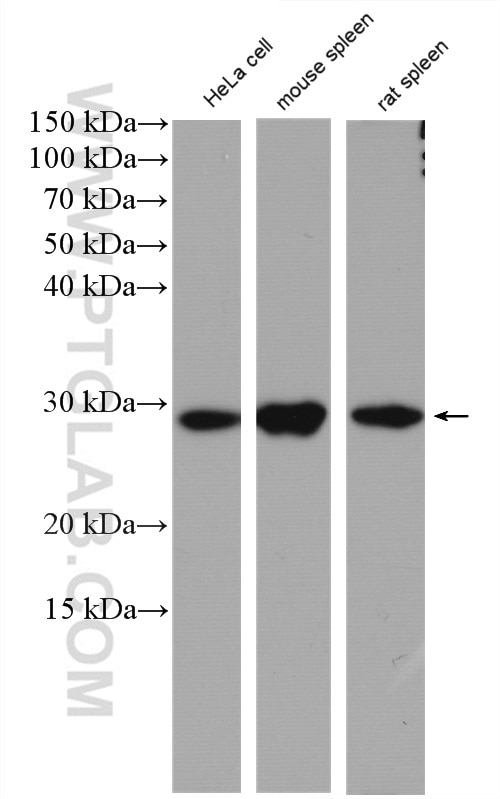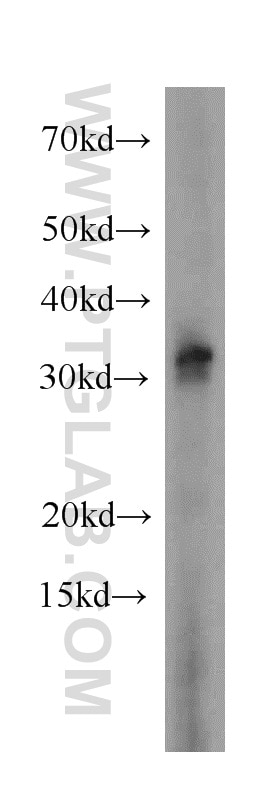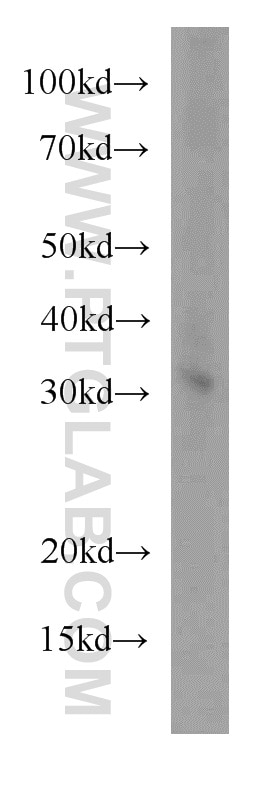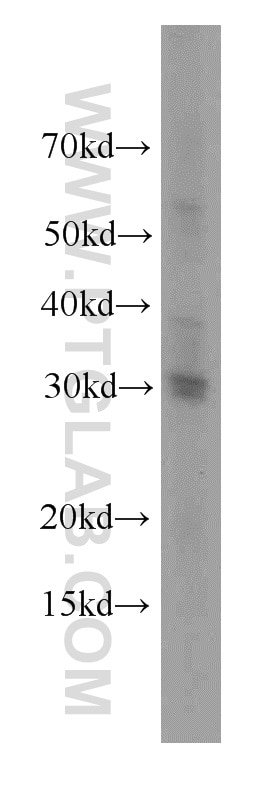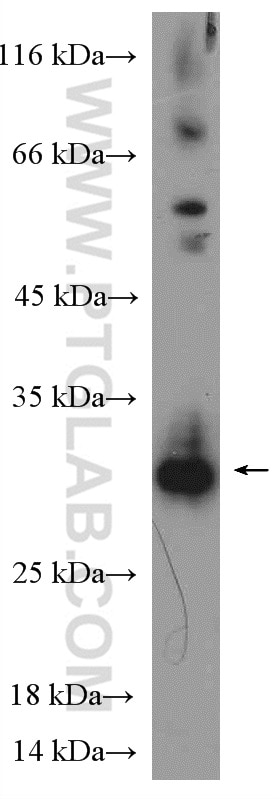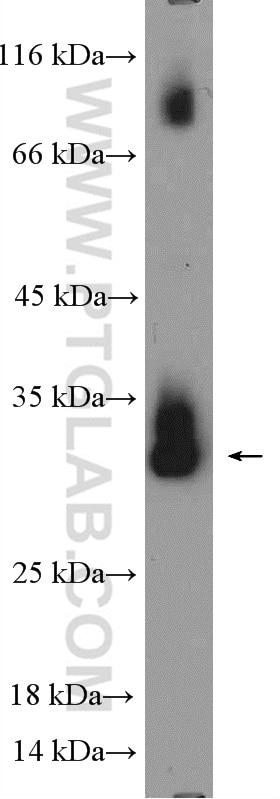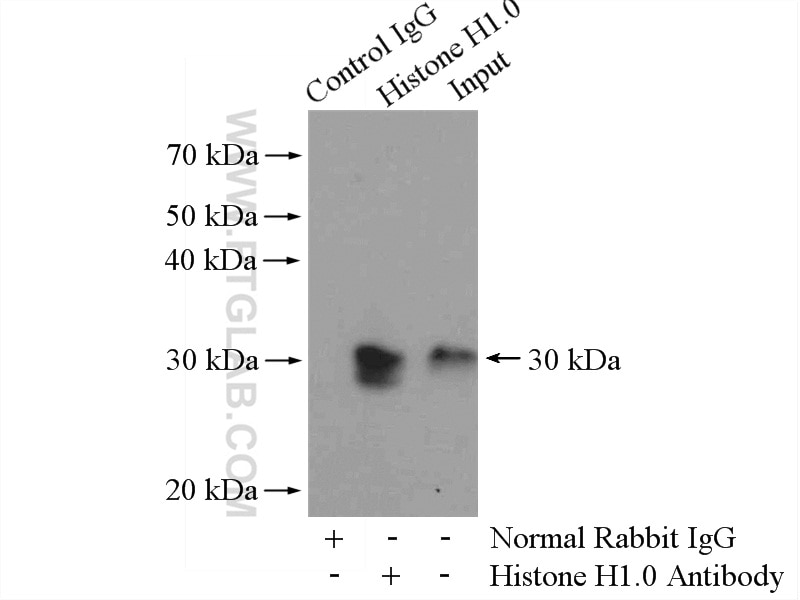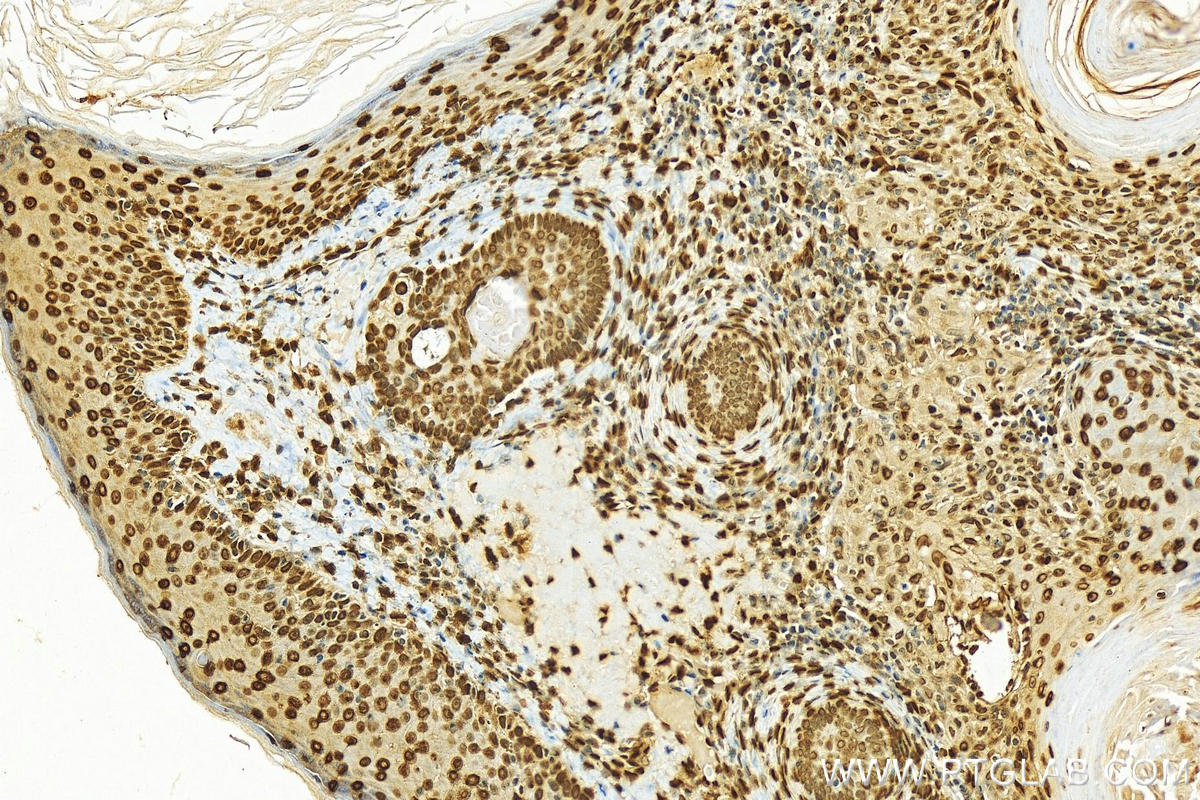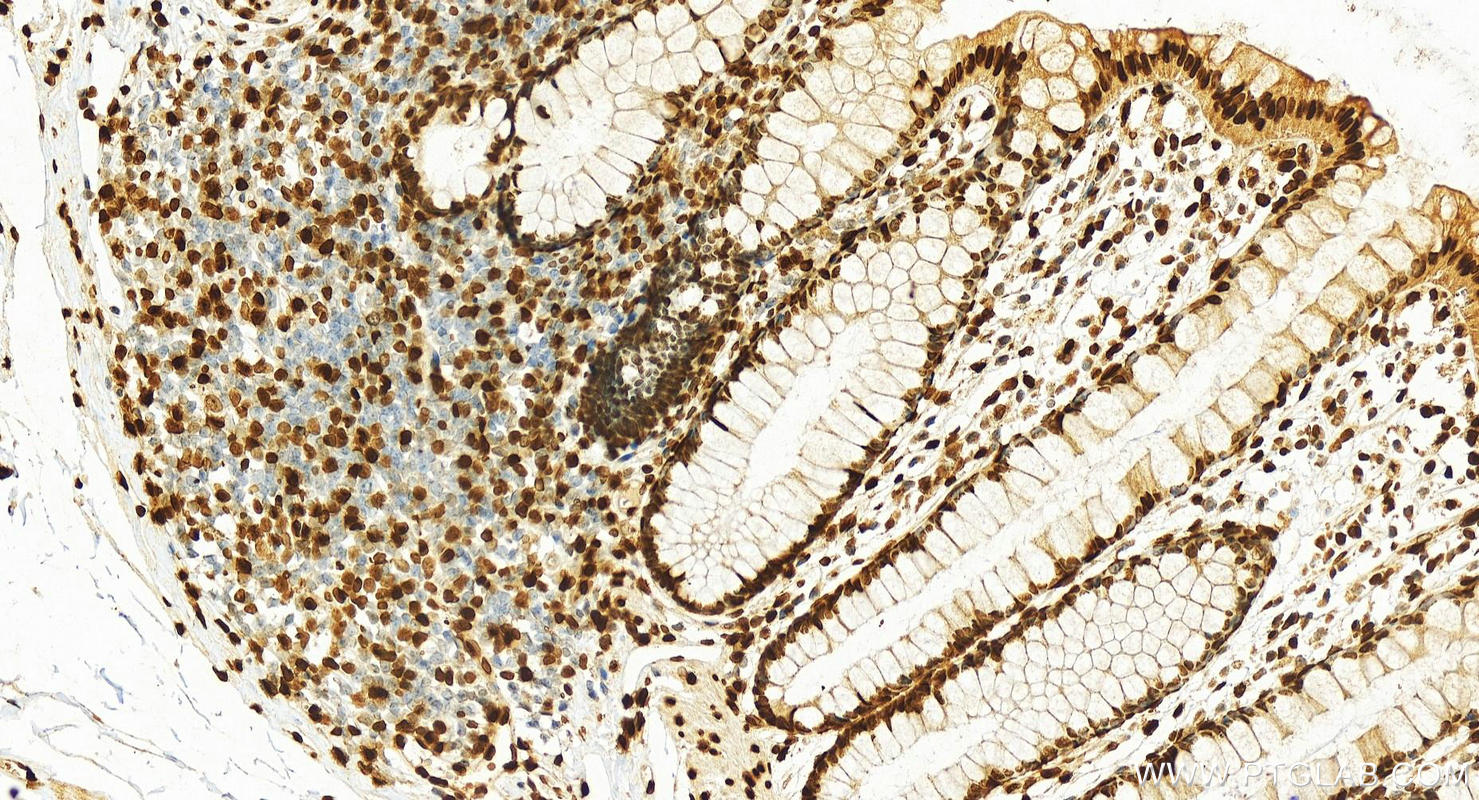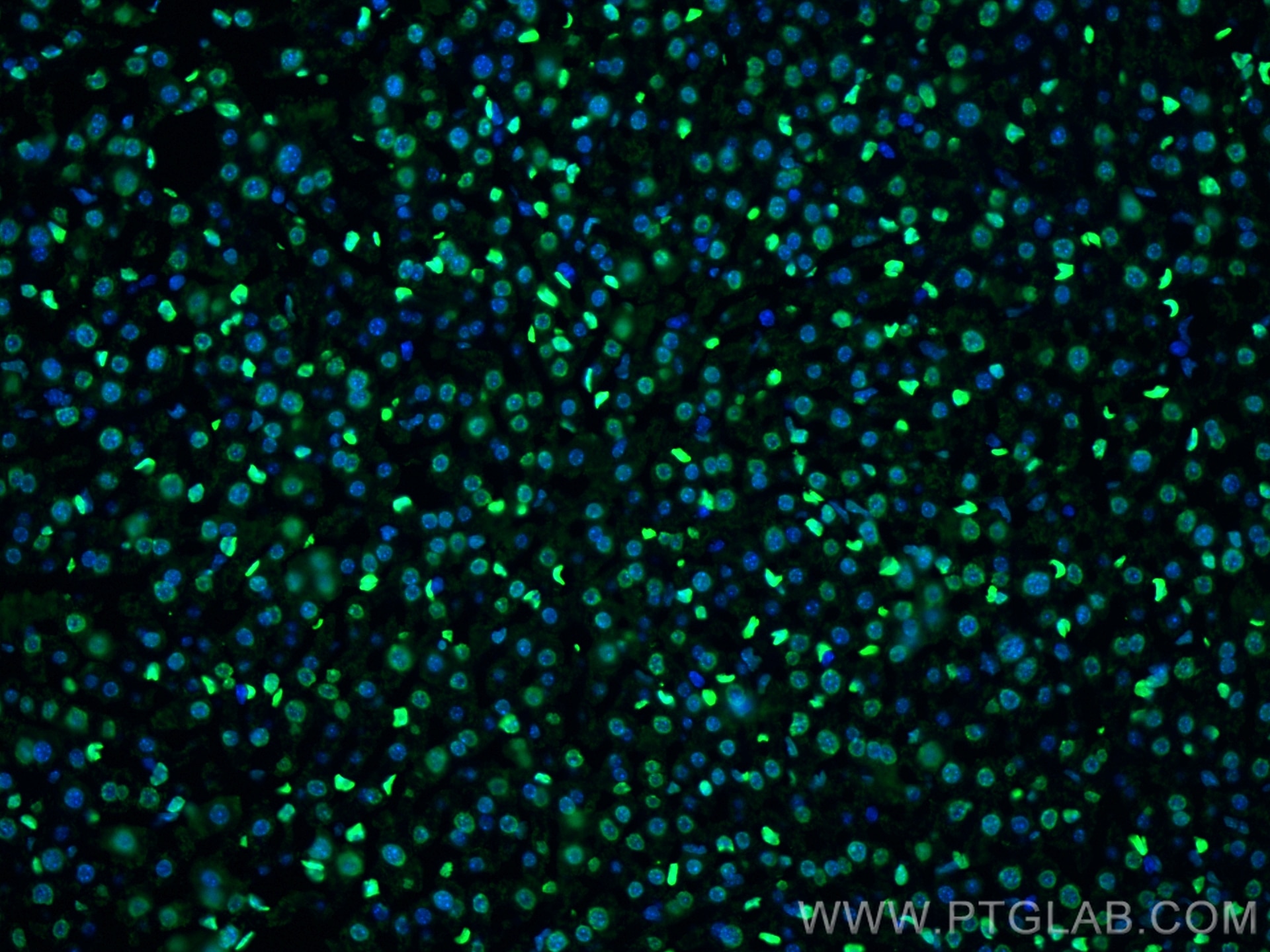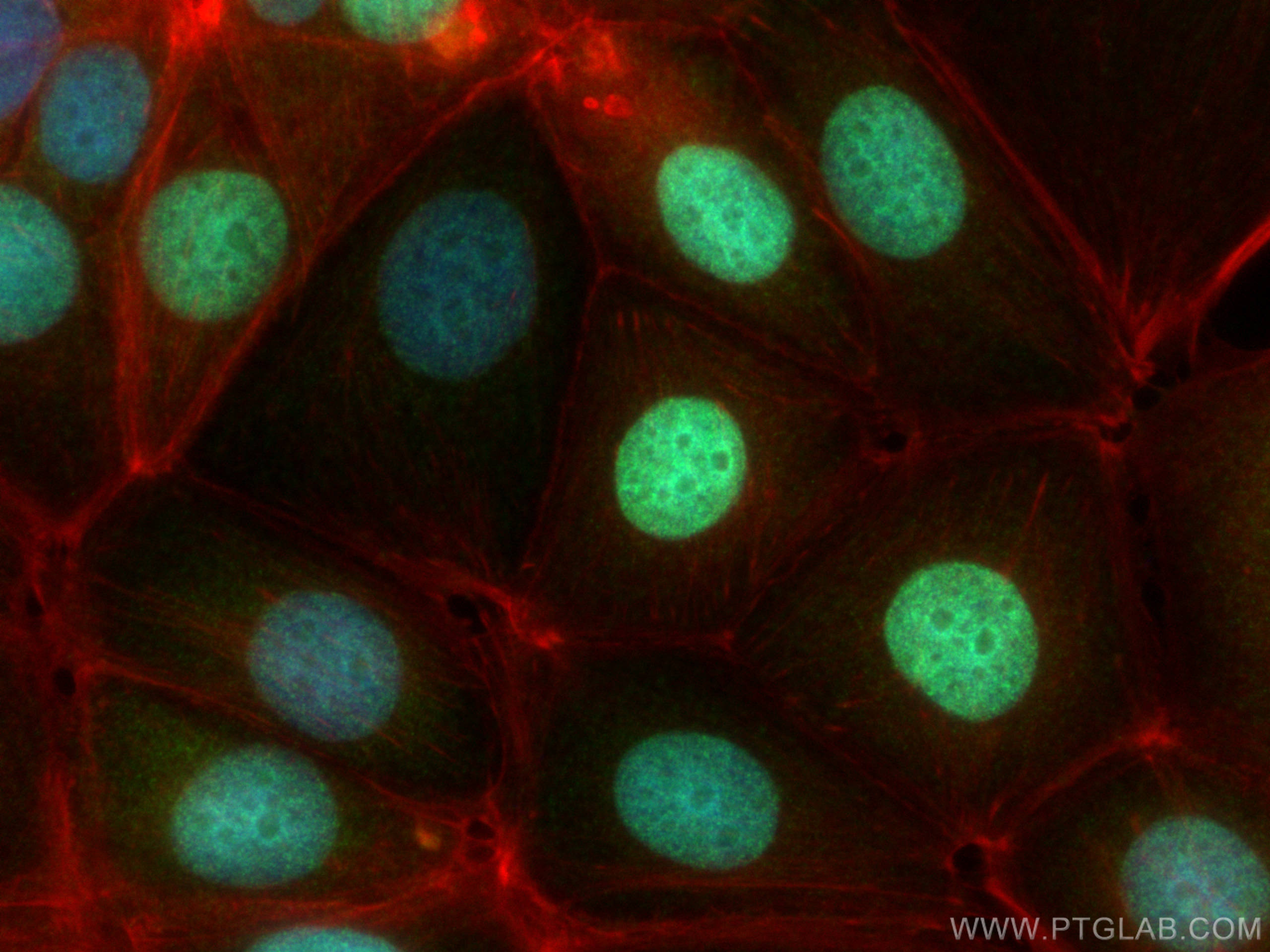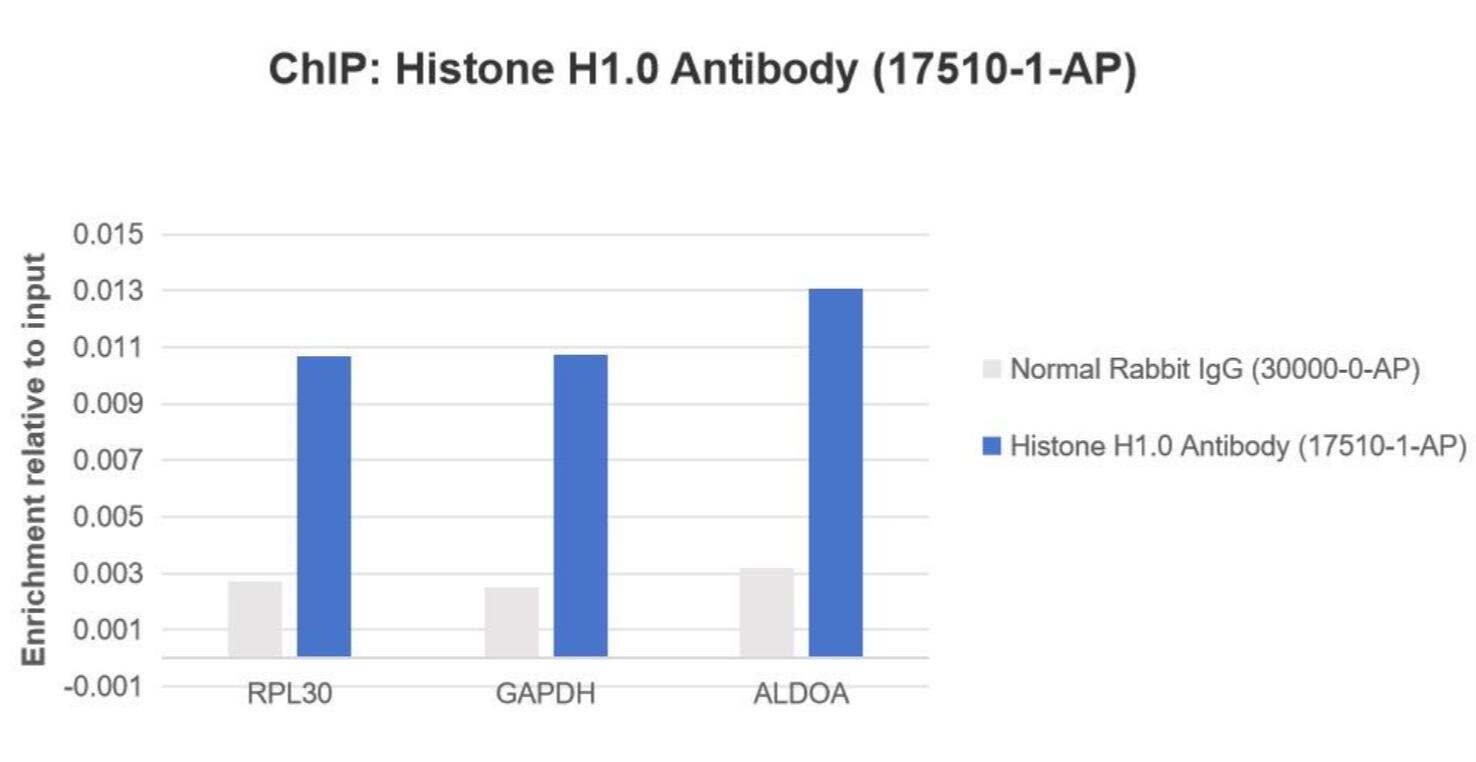Tested Applications
| Positive WB detected in | HeLa cells, Jurkat cells, A431 cells, mouse spleen tissue, rat spleen tissue |
| Positive IP detected in | A431 cells |
| Positive IHC detected in | skin cancer Note: suggested antigen retrieval with TE buffer pH 9.0; (*) Alternatively, antigen retrieval may be performed with citrate buffer pH 6.0 |
| Positive IF-P detected in | mouse liver tissue |
| Positive IF/ICC detected in | MCF-7 cells |
| Positive ChIP detected in | HeLa cells |
Recommended dilution
| Application | Dilution |
|---|---|
| Western Blot (WB) | WB : 1:500-1:1000 |
| Immunoprecipitation (IP) | IP : 0.5-4.0 ug for 1.0-3.0 mg of total protein lysate |
| Immunohistochemistry (IHC) | IHC : 1:50-1:500 |
| Immunofluorescence (IF)-P | IF-P : 1:50-1:500 |
| Immunofluorescence (IF)/ICC | IF/ICC : 1:50-1:500 |
| Chromatin immunoprecipitation (ChIP) | CHIP : 1:10-1:100 |
| It is recommended that this reagent should be titrated in each testing system to obtain optimal results. | |
| Sample-dependent, Check data in validation data gallery. | |
Published Applications
| WB | See 14 publications below |
| IF | See 1 publications below |
| ChIP | See 1 publications below |
Product Information
17510-1-AP targets Histone H1.0 in WB, IHC, IF/ICC, IF-P, IP, ChIP, ELISA applications and shows reactivity with human, mouse, rat samples.
| Tested Reactivity | human, mouse, rat |
| Cited Reactivity | human, mouse, rat |
| Host / Isotype | Rabbit / IgG |
| Class | Polyclonal |
| Type | Antibody |
| Immunogen | Histone H1.0 fusion protein Ag9982 Predict reactive species |
| Full Name | H1 histone family, member 0 |
| Calculated Molecular Weight | 21 kDa |
| Observed Molecular Weight | 32 kDa |
| GenBank Accession Number | BC000145 |
| Gene Symbol | Histone H1.0 |
| Gene ID (NCBI) | 3005 |
| RRID | AB_10695628 |
| Conjugate | Unconjugated |
| Form | Liquid |
| Purification Method | Antigen affinity purification |
| UNIPROT ID | P07305 |
| Storage Buffer | PBS with 0.02% sodium azide and 50% glycerol, pH 7.3. |
| Storage Conditions | Store at -20°C. Stable for one year after shipment. Aliquoting is unnecessary for -20oC storage. 20ul sizes contain 0.1% BSA. |
Background Information
Histones are basic nuclear proteins that are responsible for the nucleosome structure of the chromosomal fiber in eukaryotes. Nucleosomes consist of approximately 146 bp of DNA wrapped around a histone octamer composed of pairs of each of the four core histones (H2A, H2B, H3, and H4). The chromatin fiber is further compacted through the interaction of a linker histone, H1, with the DNA between the nucleosomes to form higher order chromatin structures.Linker histones are involved in the formation of higher order structure in chromatin and the maintenance of overall chromatin compaction. The H1F0 histones are found in cells that are in terminal stages of differentiation or that have low rates of cell division.Histone H1.0 (H1F0,H1FV) is a linker histone that is widely expressed in many tissues and almost all vertebrates, unlike some other linker histones. The observed molecular weight of H1F0 is about 32 kDa.
Protocols
| Product Specific Protocols | |
|---|---|
| WB protocol for Histone H1.0 antibody 17510-1-AP | Download protocol |
| IHC protocol for Histone H1.0 antibody 17510-1-AP | Download protocol |
| IF protocol for Histone H1.0 antibody 17510-1-AP | Download protocol |
| IP protocol for Histone H1.0 antibody 17510-1-AP | Download protocol |
| Standard Protocols | |
|---|---|
| Click here to view our Standard Protocols |
Publications
| Species | Application | Title |
|---|---|---|
Nat Neurosci Aerobic glycolysis is the predominant means of glucose metabolism in neuronal somata, which protects against oxidative damage | ||
Nucleic Acids Res Pin1 promotes GR transactivation by enhancing recruitment to target genes. | ||
Oncogene Downregulation of HINFP induces senescence-associated secretory phenotype to promote metastasis in a non-cell-autonomous manner in bladder cancer. | ||
PLoS Pathog Human cytomegalovirus UL23 inhibits transcription of interferon-γ stimulated genes and blocks antiviral interferon-γ responses by interacting with human N-myc interactor protein. | ||
Front Cell Dev Biol GATA4 Regulates Inflammation-Driven Pancreatic Ductal Adenocarcinoma Progression. |
